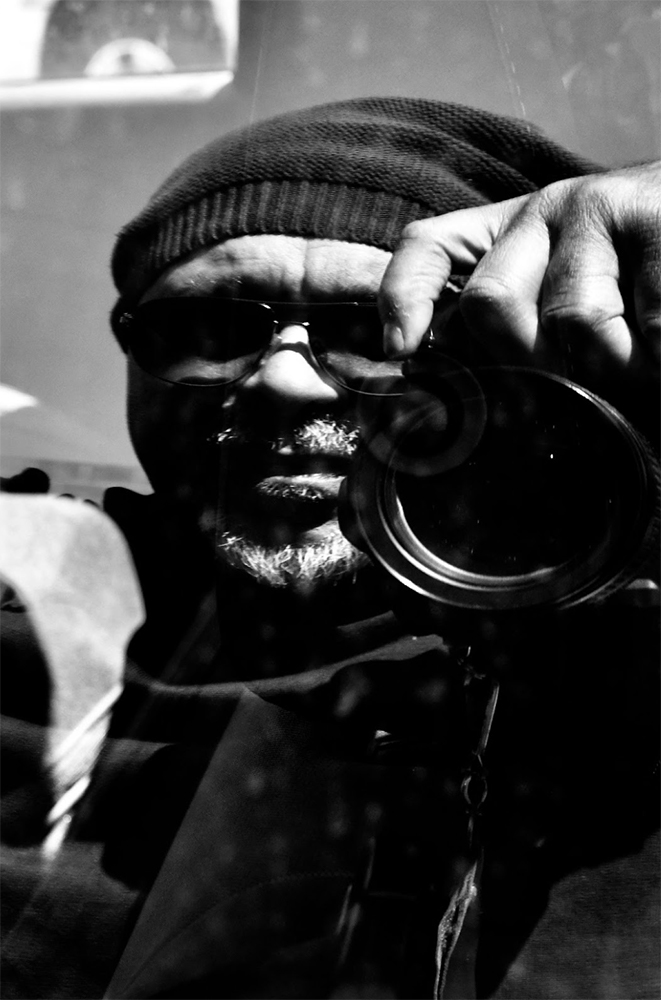A multi-dimensional artist with decades of experience, Kim Watson has written, filmed, and photographed subjects ranging from the iconic entertainers of our time to the ''invisible'' people of marginalized communities. A highly influential director in music videos' early days, Watson has directed Grammy winners, shot in uniquely remote locations, and written across genres that include advertising, feature films for Hollywood studios such as Universal (Honey), MTV Films, and Warner Brothers, and publishers such as Simon & Schuster. His passionate marriage of art and social justice has been a life-long endeavor, and, in 2020, after consulting on Engagement & Impact for ITVS/PBS, Kim returned to the streets to create TRESPASS, documenting the images and stories of LA's unhoused. TRESPASS exhibited at The BAG (Bestor Architecture Gallery) in Silver Lake, Los Angeles, September 17, 2022 - October 11, 2022.
Statement
''I'm gonna be an artist!'' That was my childhood mantra—even before I knew what it meant. You see, growing up in St. Albans, Queens and with family roots firmly planted in Harlem, I was surrounded by artistic expression, much of it created by my own family and much more blooming from the talented artists like Count Basie, James Brown and others who lived in our community—a community that would also bring us Run DMC, LL Cool J and Tribe Called Quest.
Yes, I knew the path I would take but had no idea of the journey it would become. Untethered by labels, I have scratched my creative itch through writing, filmmaking, photography, and music; always aspiring to tell a story that touches and inspires us to see the world a little bit differently and with a little more empathy.
It was while living in Brooklyn as a ''struggling artist'' that I truly saw art being used as a powerful social and political tool, capable of engaging, influencing and changing hearts and minds for the better. Since then, I have had the good fortune of both performing and producing music on the New York scene, and following a return to film school, directing a variety of projects, including over 40 music videos with Hip-Hop innovators and Grammy winners alike, from Roxanne Shante to Al Jarreau, receiving Best Music Video nominations from MTV and the Soul Train Awards, as well as NAACP recognition for my presentation of positive images of African Americans. Did I mention a move to Los Angles? Oh well...
My passion for writing led to assignments for Disney Channel, Nickelodeon, Simon & Schuster, Warner Brothers Films, MTV Films, Kidz Bop, movies of the week and the Universal Pictures hit HONEY, starring Jessica Alba. I have partnered on entertainment and tech ventures, consulted on engagement and impact for ITVS/PBS and written, blogged, filmed and photographed around the world, often on assignment and sometimes merely to feed my soul. I guess you could say that I am in love with everything about the creative process, no matter the medium. For these opportunities I am eternally grateful.
For the past year I have been immersed in TRESPASS... photographs and writing which bring focus to Los Angeles' homeless community; sharing the stories we need to hear and connecting with those too often unseen and unheard. I am thankful for the many relationships that have grown out of TRESPASS and the amazing individuals who share their world with me. Please take a look at Trespass as well as the other photo-essays, articles and more, I hope I have found a way to touch your heart, feed your soul and bring us all closer together.
Exclusive Interview with Kim Watson
